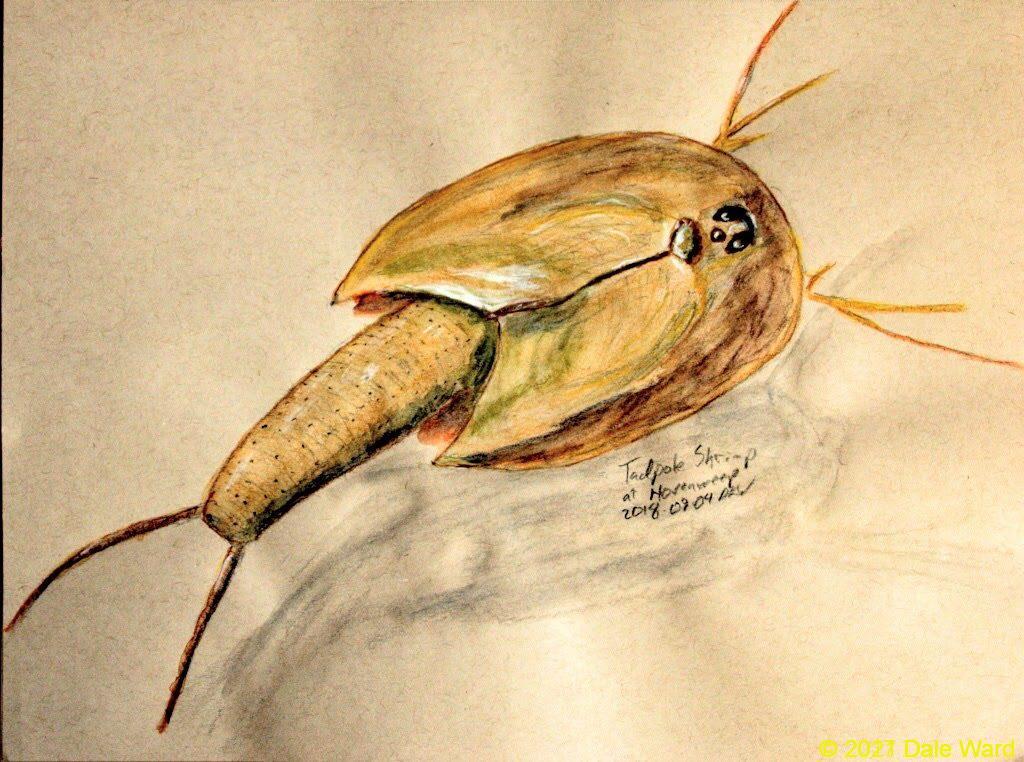Tadpole Shrimp!
My experience seeing Triops for the first time in Southwestern Arizona
My sister was visiting a couple of weeks ago, and we were out driving desert backroads in the Canyons of the Ancients, looking for ruins. We came across a cattle tank, a temporary pond, and stopped to take a look at it.
The margins of the tank were…alive…with…Tadpole Shrimp!
Tadpole Shrimp (I think these are Triops longicaudatus) specialize in living and breeding in short-lived bodies of water. Their eggs can withstand decades of desiccation - they stay buried in the sand and dust, or are spread by the wind, until moisture brings them back to life. Then they grow at a fast pace - reaching sexual maturity at seven or eight days of age. They are in a race to mature, breed and lay their eggs before the pond dries.
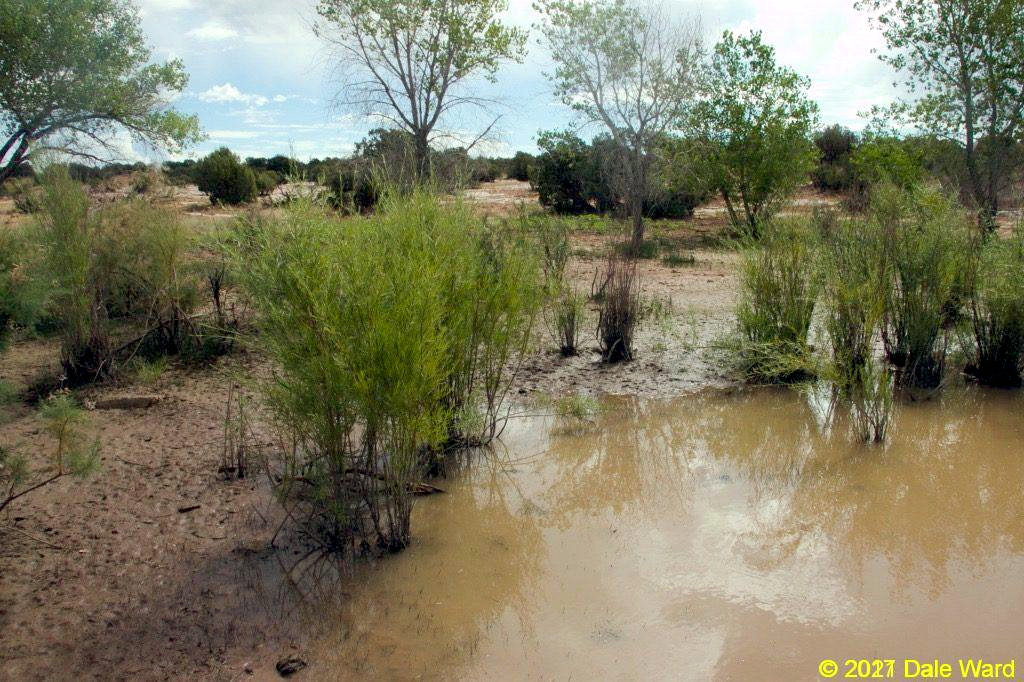 Cattle tank containing Tadpole Shrimp
Cattle tank containing Tadpole Shrimp
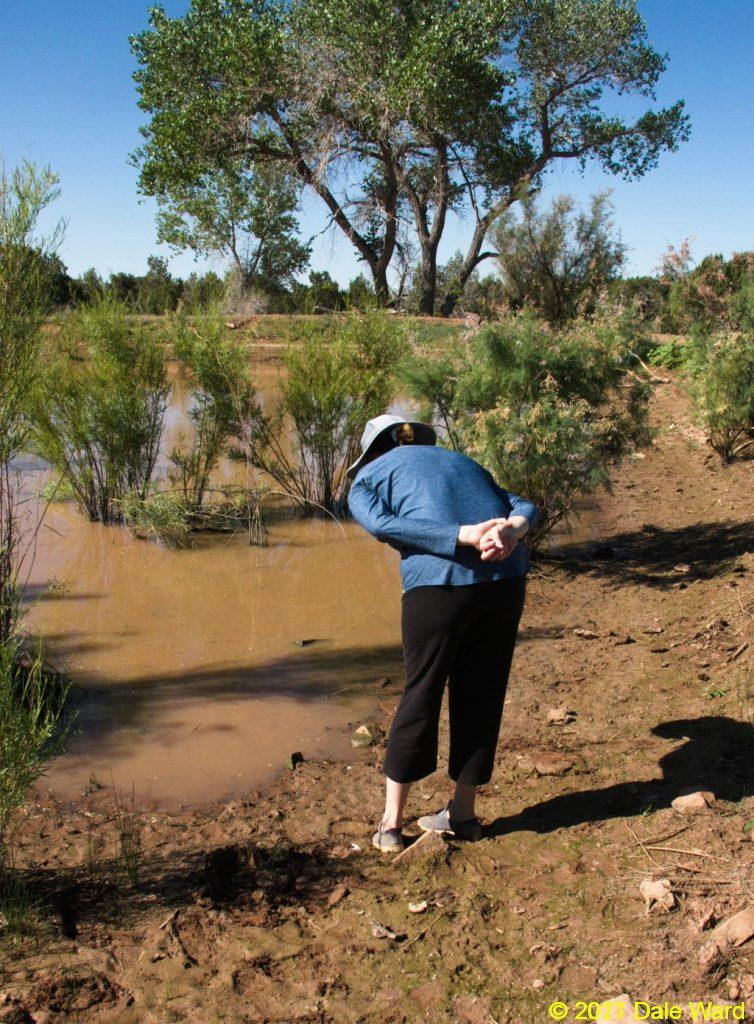 My lovely assistant, checking for quicksand before we send in the Research Team
My lovely assistant, checking for quicksand before we send in the Research Team
The Tadpole Shrimp were swimming all through the shallows, making the water move with life. We scooped one up to get a better look at it.
They look a lot like Horseshoe Crabs.
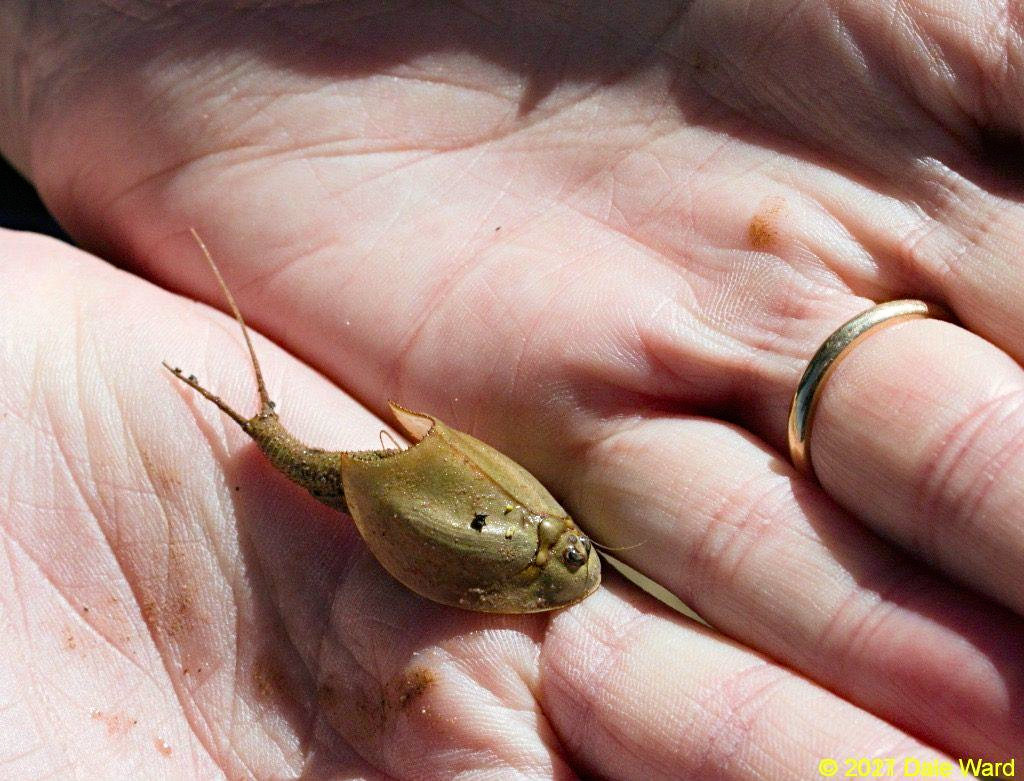 Tadpole Shrimp, dorsal view. They remind me quite strongly of Horseshoe Crabs.
Tadpole Shrimp, dorsal view. They remind me quite strongly of Horseshoe Crabs.
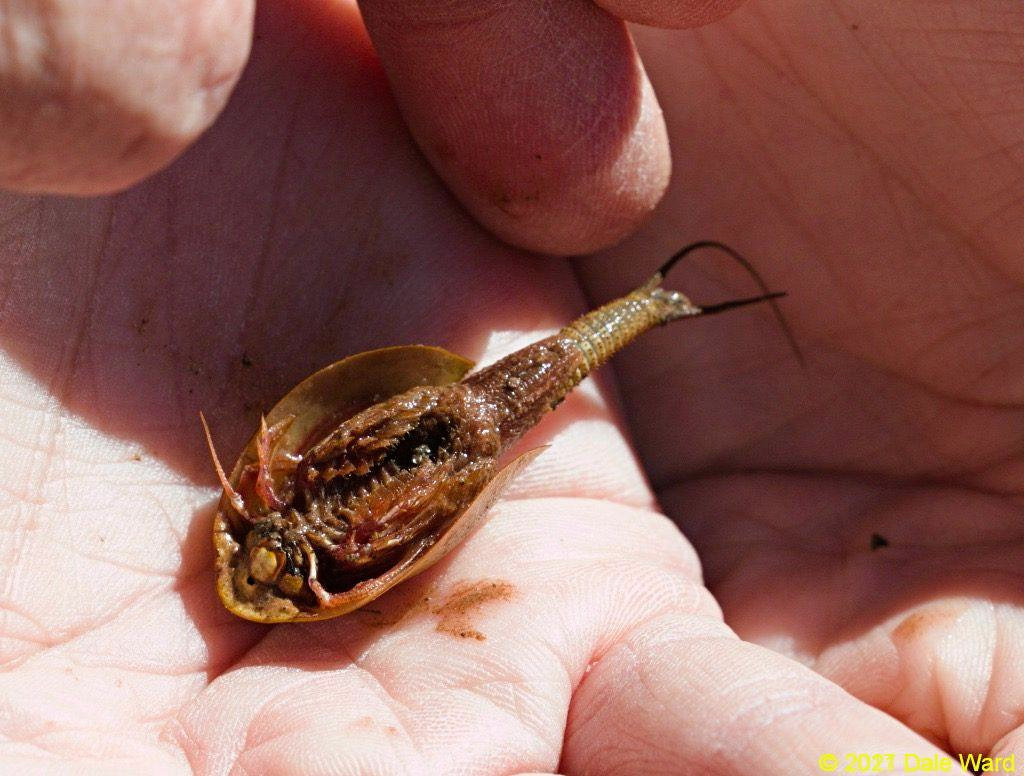 Tadpole Shrimp ventral view - you can see that it is just alive with appendages under its carapace
Tadpole Shrimp ventral view - you can see that it is just alive with appendages under its carapace
They were using their legs both for walking, sort of scuttling through the shallows, and for swimming, paddling along. Periodically they would stop in the shallows and use their paddle-legs to kick up a subsurface rooster-tail of mud. The mud would settle on their carapaces, making it easier to see their cool swoopy contours.
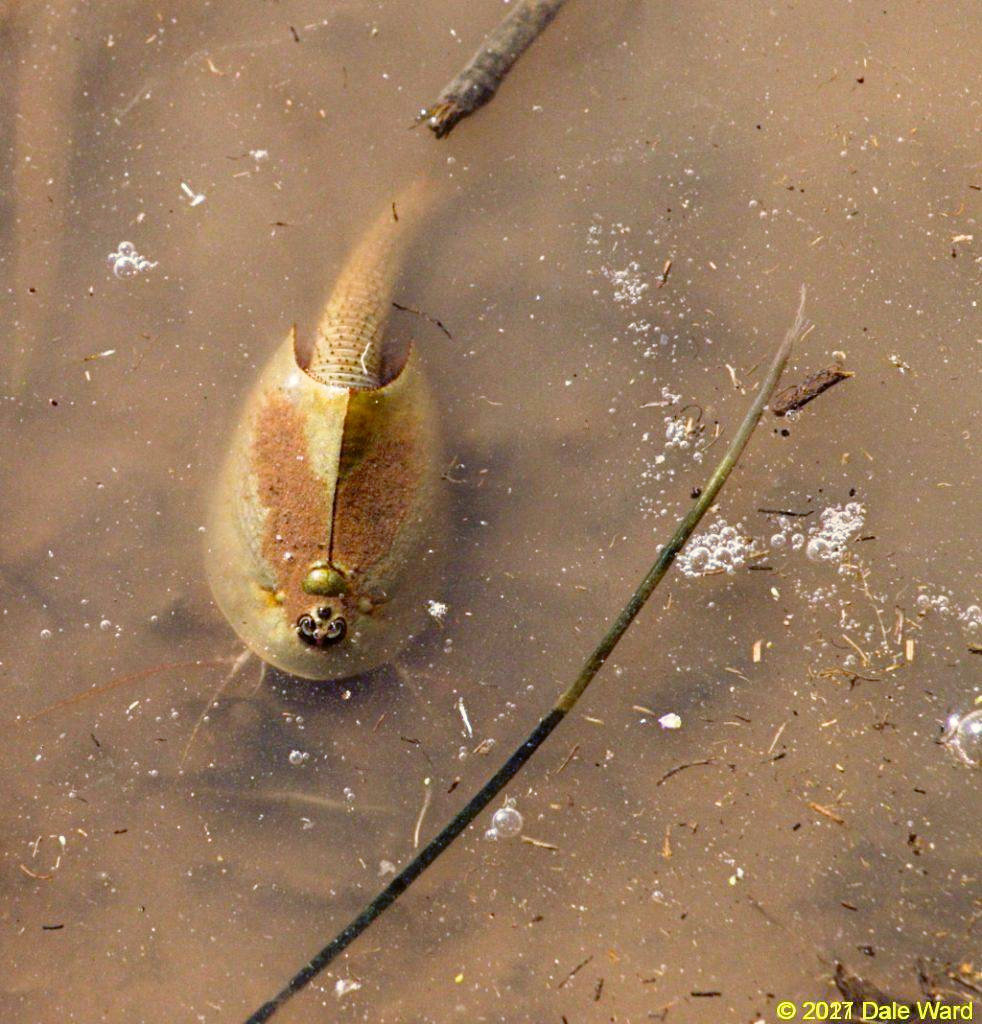 Tadpole Shrimp feeding in the shallows. Some of the mud that it has kicked up has settled on its carapace.
Tadpole Shrimp feeding in the shallows. Some of the mud that it has kicked up has settled on its carapace.
The Shrimp were very active feeders. They would frequently tip themselves on their side, or even upside down, in their enthusiasm.
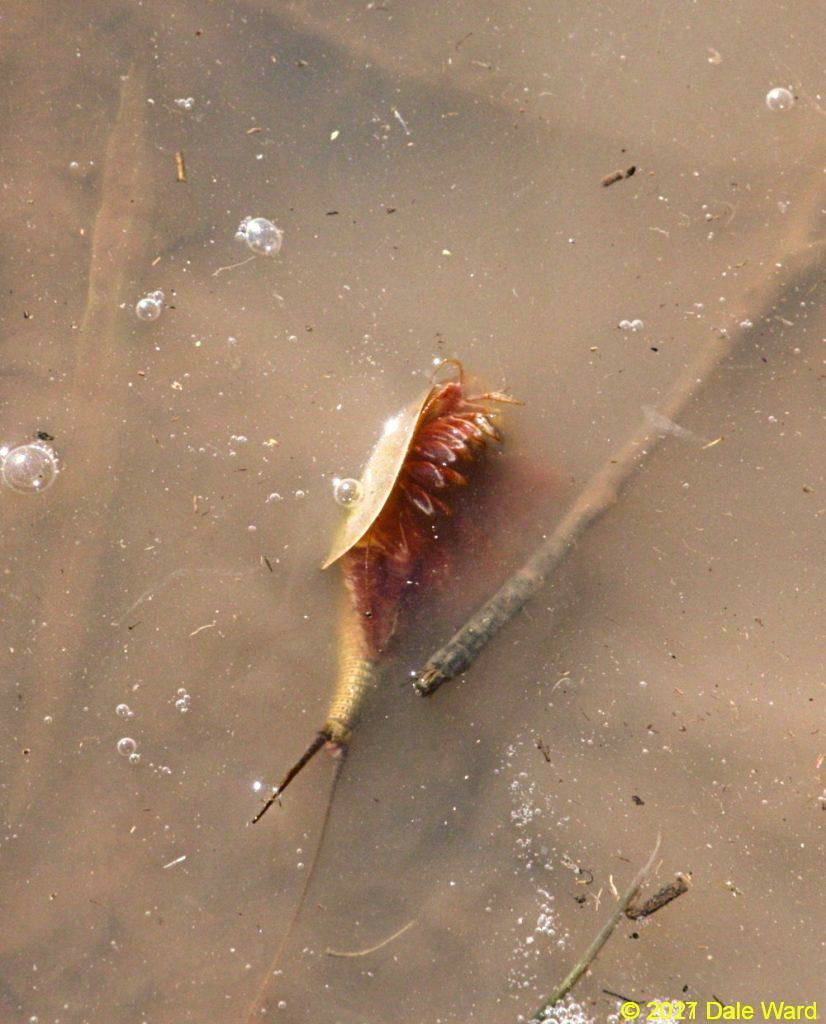 Tadpole Shrimp, turned on its side. You can see its multitude of paddle-like legs.
Tadpole Shrimp, turned on its side. You can see its multitude of paddle-like legs.
I took a brief video of some the Tadpole Shrimp, in the link below. You can get some feel of the neat way they move through the water like spacecraft, as if by magic.
I drove out again a week later to see how the Shrimp were doing, and to get more photographs. This time, there was a pair of Mallard Ducks on the water, and no Tadpole Shrimp.
I think the ducks were migrants, grateful for a good place to stop in the otherwise dry desert…and oh! these delicious Tadpole Shrimp!
I wonder if the ephemeral nature of the Tadpole Shrimps’ water isn’t so much a challenge for them, as it is a protection. The ephemeral and isolated nature of their waters tends to keep out the predators for whom the Shrimp would be easy prey.
So maybe the Tadpole Shrimp are in a race, not just to breed before the water evaporates, but also before predators such as ducks and other birds find their water.
I don’t know…but I know that if we had been a week later, we would have missed them. Very cool.
